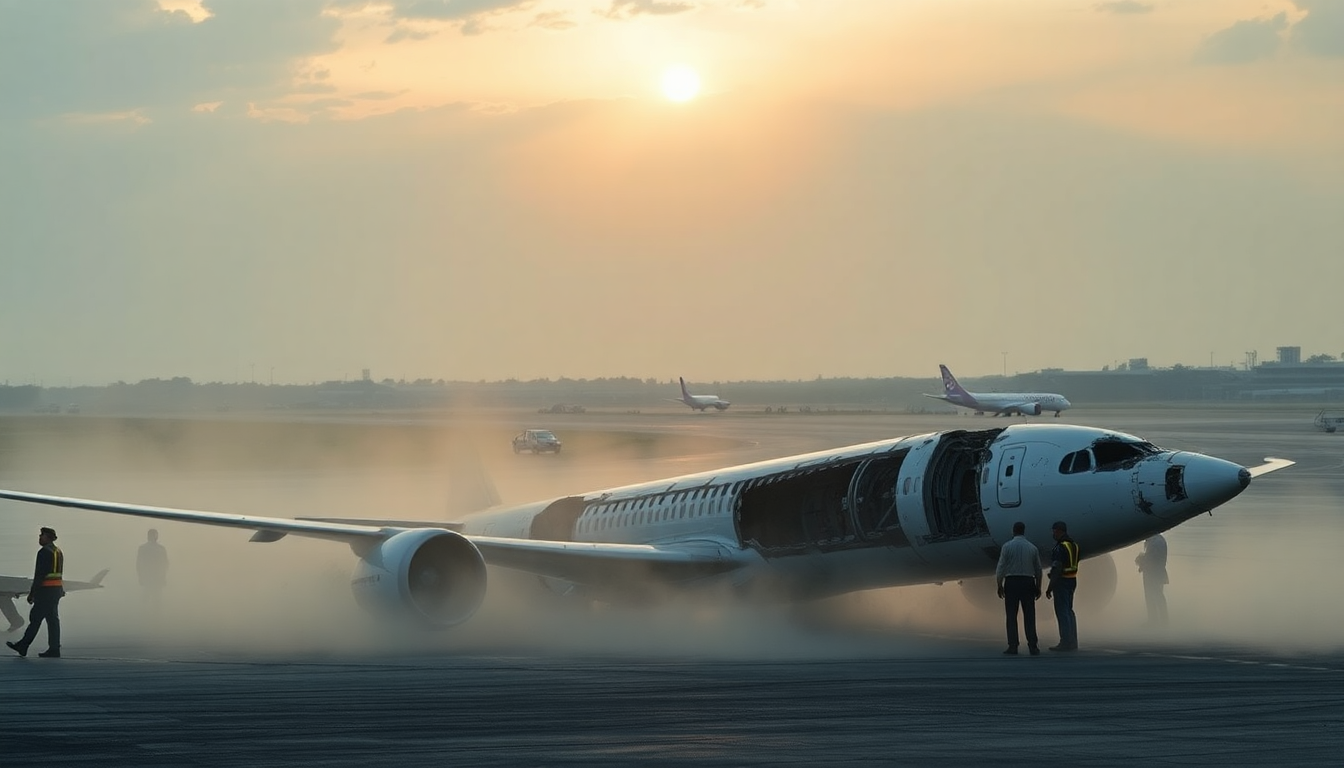Table of Contents
The recent crash of an Air India Boeing 787 Dreamliner has sent shockwaves through the aviation community and beyond, claiming the lives of more than 270 people. This heartbreaking tragedy, which unfolded shortly after takeoff from Ahmedabad, raises crucial questions about the aircraft’s operational status and safety systems. Preliminary investigations indicate that the plane’s emergency power systems were activated during the ill-fated flight, raising concerns about the functionality of its engines at the time of takeoff. In this article, we’ll explore the details surrounding the crash, including insights from aviation experts, the experiences of the sole survivor, and the ongoing investigations.
Investigation Highlights and Initial Findings
The Air India flight was bound for London Gatwick when it tragically went down just 30 seconds after takeoff. Eyewitness reports suggest that the aircraft had barely reached an altitude of 650 feet before it plummeted into a residential area, resulting in 30 fatalities on the ground and widespread property damage. Preliminary findings reveal that the aircraft’s emergency power system, known as the ram air turbine (RAT), may have been activated during the descent. This system is crucial as it provides essential electricity and hydraulic pressure in case of engine failure. So, what does the activation of the RAT mean for the plane’s engine performance at takeoff?
Aerospace safety consultant Anthony Brickhouse highlighted that dual engine failures in commercial aviation are extremely rare, especially with modern engines designed for enhanced reliability and efficiency. This perspective is vital as it underscores the ongoing investigation’s focus on understanding potential mechanical failures or other factors that contributed to the crash.
The Survivor’s Story and the Human Impact
Among the 242 passengers and crew on board, only one individual, British national Vishwash Kumar Ramesh, managed to survive this horrific incident. Ramesh, who was seated near an emergency exit, escaped through the door and navigated through the wreckage, visibly shaken but resilient. Tragically, his brother, Ajaykumar, was not as lucky, seated just a few rows away when disaster struck. Ramesh’s harrowing experience underscores the human cost of such tragedies, as he bravely participated in his brother’s funeral service, clearly affected yet determined to honor his memory.
The brothers had been visiting relatives in India and were returning to the UK when fate intervened with catastrophic consequences. Vishwash described the moments leading up to the crash, recalling how the aircraft seemed to stall midair, with warning lights flashing as it struggled to gain altitude. His account adds a deeply personal dimension to the disaster, reflecting the profound emotional toll on families affected by such aviation tragedies. Can you imagine being in such a situation?
Ongoing Investigations and Future Implications
As the investigation unfolds, aviation authorities are meticulously combing through the wreckage and analyzing flight data to uncover the root cause of this devastating incident. The implications of this crash extend far beyond immediate concerns for passenger safety; they also challenge the regulatory frameworks and safety protocols that govern commercial aviation. Ensuring the integrity of aircraft systems, enhancing emergency response mechanisms, and fostering a culture of safety are critical areas that demand attention moving forward.
This tragic event serves as a stark reminder of the complexities and risks that come with air travel. While the aviation industry has made significant strides in safety, incidents like this highlight the necessity for constant vigilance, rigorous training, and comprehensive oversight to protect passengers and crew alike. What can we learn from this tragedy to make flying safer for everyone?


